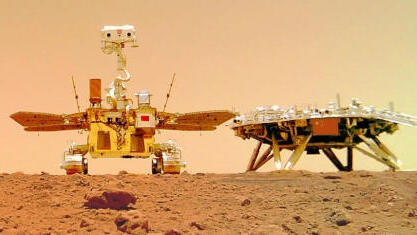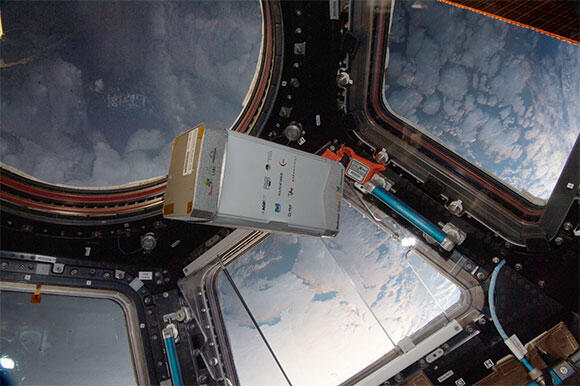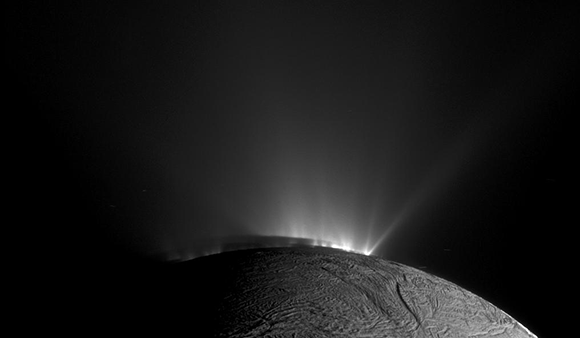Getting your Trinity Audio player ready...
An artificial Israeli star over Hawaiian skies
A groundbreaking development led by Israeli scientists may revolutionize observational astronomy, significantly enhancing the capabilities of large optical telescopes. This innovative approach involves transmitting a laser beam from a satellite directly to a ground-based telescope, enabling extremely precise calibration. The laser, functioning as an "artificial star", has well-defined power and brightness levels.
Read more:
This permits the accurate measurement of atmospheric disturbances that typically distort light at a given time and direction. Since the power and brightness of the laser, serving as an "artificial star", are precisely known, it's possible to accurately measure atmospheric disturbances that distort its light at a given time and direction, and use this information to rectify the telescope's observations of various celestial objects accordingly.
Consequently, using this approach, ground-based telescopes can attain image quality hitherto achievable only with space telescopes, which operate above the Earth’s atmosphere primarily to circumvent atmospheric interference, which may now be effectively overcome using this new method.
The laser was first activated this week from NASA's LCRD satellite, which was launched at the end of 2021 for experiments in laser communication from an orbit 36,000 kilometers high. During the experiment, conducted on the night between Wednesday and Thursday, it targeted the ground-based Keck telescope – a pair of large telescopes in Hawaii. The initial experiment was designed to demonstrate technological feasibility – locking the telescope onto the light source, ensuring coordinated work between the telescope and satellite teams, and performing accurate laser measurements.
"Unfortunately, it was a very challenging night to conduct such an experiment, with many clouds and winds over 100 km/h," reported Dr. Eliad Peretz, who leads the experiment on behalf of NASA, to the Davidson Institute immediately after the observation night.
“All the telescopes in the area were closed due to the conditions, but we insisted on trying, and since our laser operates in the near-infrared range, which can penetrate the clouds, we managed to lock the telescope onto the laser. When this happened, there was a celebration in the telescope's control room. It was truly an atmosphere of launching into space. For us, this night is already a great success."
Dr. Peretz and his team, including Israeli scientist Keshet Shavit, responsible for telescope calibration and scientific data analysis, are gearing up for another night of experiments at the Keck Observatory in a few weeks, keeping their fingers crossed for more favorable weather conditions. Following this, Peretz and his team intend to submit a proposal to NASA for the construction of a specialized satellite, dedicated to the calibration of ground-based telescopes across various wavelengths.
This satellite, dubbed ORCAS (Orbiting Configurable Artificial Star), would serve as a configurable artificial star in space. If the proposal is approved, Peretz envisions a launch of the satellite at the beginning of the next decade.
“This experiment paves the way for the giant telescopes currently under construction, such as the ELT telescope, to deliver the same image quality as optical space telescopes, but at a fraction of the cost," explains Peretz.
“The cost of a space telescope with an eight-meter mirror is estimated at 18 billion dollars, and larger space telescopes are not practically feasible due to launch constraints. In contrast, the ORCAS mission is expected to cost $75 million and promises to significantly upgrade the performance and capabilities of existing ground telescopes."
Mars' hidden water reservoirs
Mars, the Red Planet, harbors abundant ice at its poles, but just like on Earth, the conditions at the poles are more extreme, limiting the scope of research missions, which primarily focused on operating at equatorial regions for practicality reasons. For future manned missions to Mars, equatorial regions are more practical for landing and operations. However, a critical factor for the success of these missions is the availability of water, not only for consumption and cultivation but also for generating oxygen and as a key component in rocket fuel production.
3 View gallery


The Chinese rover Zhurong next to its landing site in Utopia Planitia on Mars
(Simulation: Chinese Space Agency)
Now, a team of researchers has discovered an area that may potentially be rich in subsurface ice deposits near Mars' equator, based on measurements made by the ground-penetrating radar of the American satellite Mars Express orbiting the planet. The researchers examined measurements of soil layers in the area known as the "Medusae Fossae Formation".
In a study published in the journal Geophysical Research Letters, they report that, according to the analysis of the radiation reflection, the soil in the area is alternately arranged in layers of ice-poor soil and ice-rich soil. This stratification mirrors the polar layering on Mars, suggesting that these equatorial layers could also be composed of frozen water. The researchers estimate that these ice deposits could be extensive, stretching for kilometers underground, potentially containing 30-50 percent of the ice volume found at Mars’ North Pole.
“If indeed confirmed as ice, this will be the most significant discovery of an ice deposit at Mars’ low latitudes,” said researcher Gareth Morgan from the Planetary Science Institute in Arizona. 'However, the potential ice reservoirs lie beneath hundreds of meters of dry material, presenting formidable extraction challenges”.
The researchers' observations indicate that the ice layers commence at a depth of around 300 meters and extend to several thousand meters below the surface. Accessing this ice will pose a considerable engineering challenge. Even if these ice deposits do not directly facilitate manned missions to Mars, they could shed light on the planet's climatic history. Morgan noted,
"We have long theorized about Mars experiencing 'ice ages,' during which its axial tilt varied. In such periods, the ice at the poles becomes less stable and migrates to lower latitudes. Richness of ice in these equatorial formations, if confirmed, would strengthen the hypothesis of extended ice-age periods on Mars.
A small, watery exoplanet
Observations by the veteran Hubble Space Telescope have unveiled the first-ever evidence of water vapor within the atmosphere of a relatively small exoplanet located in another solar system. Known as GJ 9827d, this rocky exoplanet was initially discovered by the Kepler Space Telescope in 2017. With a diameter roughly twice that of Earth, it orbits a red dwarf star positioned approximately 97 light-years away from our solar system. The planet is found in relatively close proximity to its sun, completing a full cycle in merely six Earth days, resulting in surface temperatures around 400 degrees Celsius.
3 View gallery


The Moon is the next station, on the way to Mars
(Photo: NASA via Davidson Institute of Science Education)
Researchers from the United States, Canada, and Germany have been following the planet for a period of three years, documenting 11 instances of it transiting between Earth and its star. This transit allowed light from the star to pass through the planet's atmosphere, enabling the team to analyze the wavelengths of light passing through the atmosphere, compare them to those emitted directly from the star, and thus identify the spectroscopic signature of the materials comprising the atmosphere, ultimately confirming the presence of water vapor.
“This would be the first time that we can directly show through atmospheric detection that these planets with water-rich atmospheres can actually exist around other stars,” said Björn Benneke from the Trottier Institute for Research on Exoplanets at the Université de Montréal, Canada, a member of the research team. “This is an important step toward determining the prevalence and diversity of atmospheres on rocky planets.”
“Water on a planet this small is a landmark discovery,” added Laura Kreidberg, director of the APEx (Atmospheric Physics of Exoplanets) department at the Max Planck Institute in Heidelberg.
Excitement may be a bit premature, as the researchers have not yet been able to determine whether the exoplanet's atmosphere primarily consists of a high concentration of water vapor or if it is predominantly rich in hydrogen, akin to the atmosphere of planet Neptune in our solar system, with a lower proportion of water.
Given the exoplanet's relatively advanced age, approximately six billion years (compared to our solar system which is 'only' 4.5 billion years old), and its high surface temperature, the researchers suspect that intense radiation over time may have caused most of the hydrogen and helium to evaporate, leaving behind an atmosphere rich in hot water vapor. “The planet GJ 9827d could be half water, half rock. And there would be a lot of water vapor on top of some smaller rocky body,” said Benneke.
The researchers have not yet identified evidence of hydrogen in the planet's atmosphere, which strengthens the hypothesis that it is mainly composed of hot water vapor. To investigate the matter in depth, the researchers recently observed the system with the newer and larger James Webb Space Telescope, which is expected to provide additional insights. The researchers are now awaiting these new findings, as Kreidberg concluded, “We can hardly wait to see what those data reveal.”
An unsuccessful but precise landing
At the end of last week, Japan became the fifth country to successfully land a spacecraft on the Moon. However, the accomplishment was soon overshadowed by complications, as it quickly became evident that the spacecraft SLIM's solar panels were not generating electricity, presumably due to misalignment with the sun—likely a consequence of the lander overturning during the landing phase. The Japan Aerospace Exploration Agency (JAXA) initially planned to operate SLIM for about two weeks, but had to cease its instruments just two and a half hours post-landing as the batteries neared depletion.
Before the landing, SLIM successfully released two tiny robots to explore the lunar surface. One robot managed to capture images of the lander, confirming it had overturned upon landing. JAXA explained this week that the likely cause of the overturning was an engine malfunction. One of the two primary landing engines of the lander ceased operation at an altitude of 50 meters above the lunar surface, forcing the computerized landing system to complete the descent with only one functioning primary engine. The exact reason for this malfunction remains unclear.
The lander did not completely flip over, but rolled onto its side. This positioning caused its solar collectors to face westward instead of upwards. JAXA remains hopeful that some electricity can still be generated during the upcoming lunar evening that will occur in a few Earth days, potentially allowing for limited operation of the lander's scientific instruments.
Despite the disappointing end of the landing, JAXA notes with satisfaction that the lander achieved the most accurate landing ever on the Moon, landing only 55 meters away from the target point. The navigation system relied on a computerized vision system, analyzing real-time spacecraft camera images and comparing them with crater maps for continuous location tracking. The Successful implementation of this system may benefit future lunar missions and could open new horizons for computerized navigation above the Moon, including Israel’s Beresheet 2 endeavor, which is concurrently developing a computerized vision system for lunar landings.


